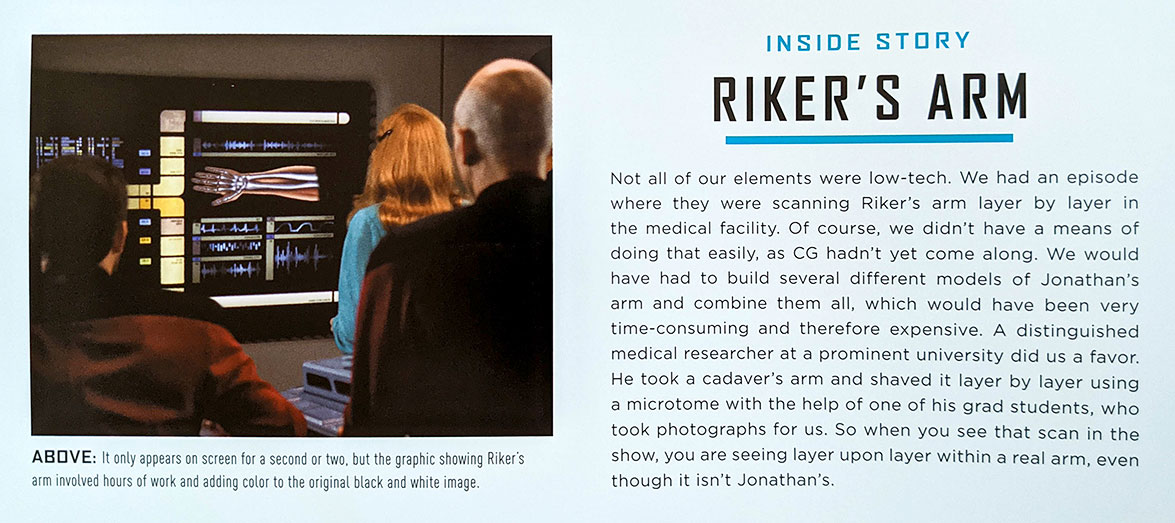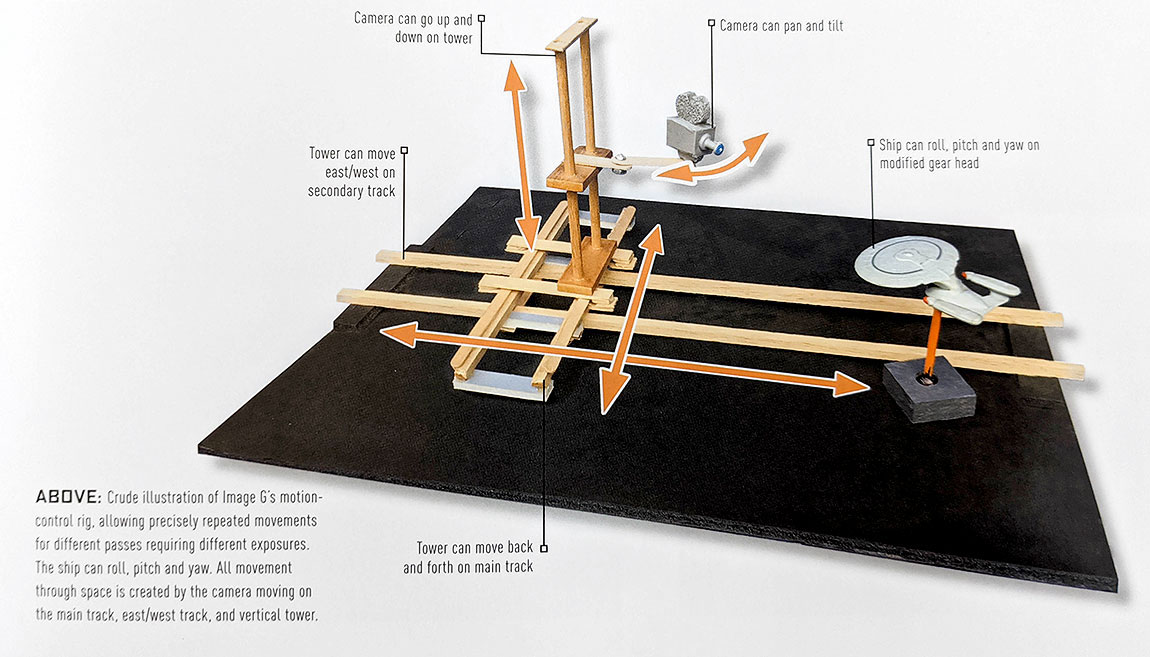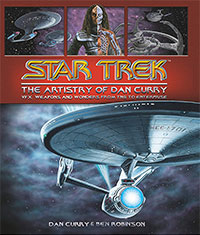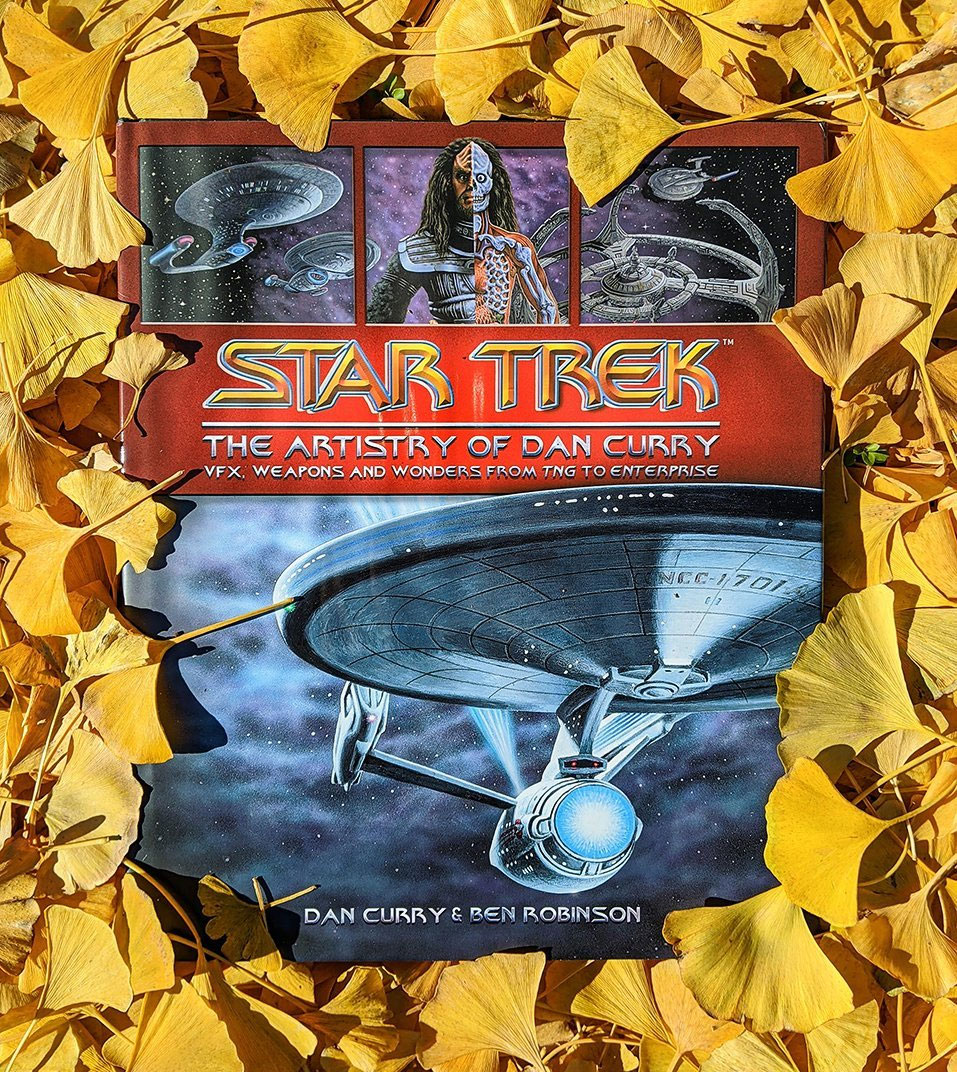It’s right there in the title: artistry.
Dan Curry quite literally did it all when it came to his behind-the-scenes contributions to the Star Trek franchise, and to describe him as anything other than an artist would not tell the complete story.
In this incredibly detailed look at Curry’s career, Star Trek: The Artistry of Dan Curry is the complete story — directly from the man himself (with co-writer Ben Robinson).
The 204-page publication from Titan Books is another standout in the growing line of Trek reference books released in the last few years. However, unlike some of those other releases, the broad scope of the experiences being detailed here — and the in-depth text that accompanies those narratives — is unparalleled.
Curry is well-known in Trek production lore as a true jack of all trades. Born out of his interest in martial arts and from his time in the Peace Corps and living in Asia, he famously designed a myriad of unique Trek weapons — including the Klingon bat’leth and mek’leth, which everyone knows, of course. But his resume also includes a slew of other creative titles and job responsibilities.

From visual effects supervisor and producer to second unit director and the director outright of “Birthright, Part 2,” the multi-hyphenate artist also designed two different title sequences (for Deep Space Nine and Voyager), and was a conceptual designer for Trek across four series from 1987 to 2005. Again, he literally did it all.
Star Trek: The Artistry of Dan Curry is broken up into 27 different chapters, and each of those section titles almost comically showcases exactly how many areas of Star Trek production were influenced and guided by Curry: Video Compositing, Motion Control, Models, Explosions, Directing Second Unit, Creating Body Doubles, Martial Arts & Weapons, Matte Painting, Visual Effects Producer, The Move to CG, Creatures, and more.
The titles are a cornucopia of jobs and skillsets with varying levels of expertise required to navigate them, and Curry excelled in all of them. From a fascinating timeline that opens the book and details his career, to a heartfelt afterword to close it out, the book is absolutely packed with elements from the “Department of I Had No Idea About That.”

And you know if you are reading a book with detailed breakout sections on items like “Blowing Up Remmick,” “Lava Flow in ‘Basics,’” and “Wreck of The Raven,” you are surely going to learn more than a few things you didn’t know.
- Iconian Ruins – The Iconian ruins so memorably depicted in the TNG episode “Contagion,” featured a combination of a Curry matte painting and an art department model of the Iconian tower that was made from a swimming pool filter mounted on a cardboard tube and embellished with model and toy parts. Pretty cool.
“I did an acrylic painting of the terrain,” explains Curry, “adding distant ruins rising out of the sand. The sky was a separate painting, so it could be independently controlled and moved in compositing.”
- Riker’s Arm – As a testament to Curry’s attention to detail, there is a brief but key shot of Riker’s forearm being shown in multiple layers that pre-dated CG. In order to bring the shot together for the episode “Schisms,” Curry had a distinguished medical researcher at a prominent university take “a cadaver’s arm and shaved it layer by layer with a microtome with the help of one of his grad students, who took photographs for us.”
So, yeah, that’s a real arm.

- Title Sequences – Curry’s beautiful work in designing the visuals for the title sequences for Deep Space Nine and Voyager are documented in detail here. But beyond that, who knew he has previously designed more than 100 title sequences for other television series’ and features.
Regarding his DS9 titles: “I decided to open with a shot of a comet to suggest remoteness,” he writes, “before discovering the station itself in the distance.”
- Jem’Hadar Beach – The beach head featured in a shot of two Jem’Hadar soldiers early in “Rocks and Shoals” is a mélange of Dan Curry specials. He not only created the matte painting used in the shot as the edge of the cliff, but composited it together with a photo he took of a scenic view in Ireland.
“The actual shape of the shoreline wasn’t exactly what I had in mind,” he details, “so we squeezed it east-west to make the terrain more ruggedly vertical, and color-corrected it to match the quarry (where the actors were shot).”

- ‘Storm Front’ VFX – Enterprise won the international Visual Effects Society Award for Best Broadcast Visual Effects for “Storm Front, Part 2.” Curry helped storyboard the final battle sequence — where the Enterprise NX-01 dogfights over Nazi-occupied Manhattan — and also played an important role in creating the old school 1940s newsreel that opened the episode.
“We looked through stock images, but couldn’t find a perfect angle from the 1940s,” he writes, “so in Photoshop I took a photo from the 50s, made it black and white, painted out all the people and any buildings that were built after 1939, and added in the binocular stands.”
(Oh, and the award they picked up from the VES? It was actually designed by Curry. He literally DOES. IT. ALL.)
- Species 8472 – Based on a comedic alien character he created for his MFA Theatre thesis project, it was Curry’s idea to have the major computer-generated species have three legs. “I wanted to do something that couldn’t be mistaken for a man in a suit.”

In addition to all those elements — and hundreds more — Curry also makes space in this book to celebrate some of his peers for their accomplished work. Most notably, his recollections in full-page callouts on supervising producer Peter Lauritson, VFX supervisor Ronald B. Moore, and video compositors Fred Raimondi and Paul Hill add important context to the collaborative nature of this kind of work.
In the end, it feels close to impossible to summarize the totality of Dan Curry’s immense contributions to the Star Trek franchise in any single format like a book, but Curry and co-author Ben Robinson have basically done it here.
Star Trek: The Artistry of Dan Curry is one of the biggest, best and most comprehensive in terms of showcasing not only how Trek established itself as a groundbreaking television production in the 1980s and 90s, but how critical Dan Curry was to that success.
![]()
Jim Moorhouse is the creator of TrekRanks.com and the TrekRanks Podcast, and can be found living and breathing Trek every day on Twitter.


